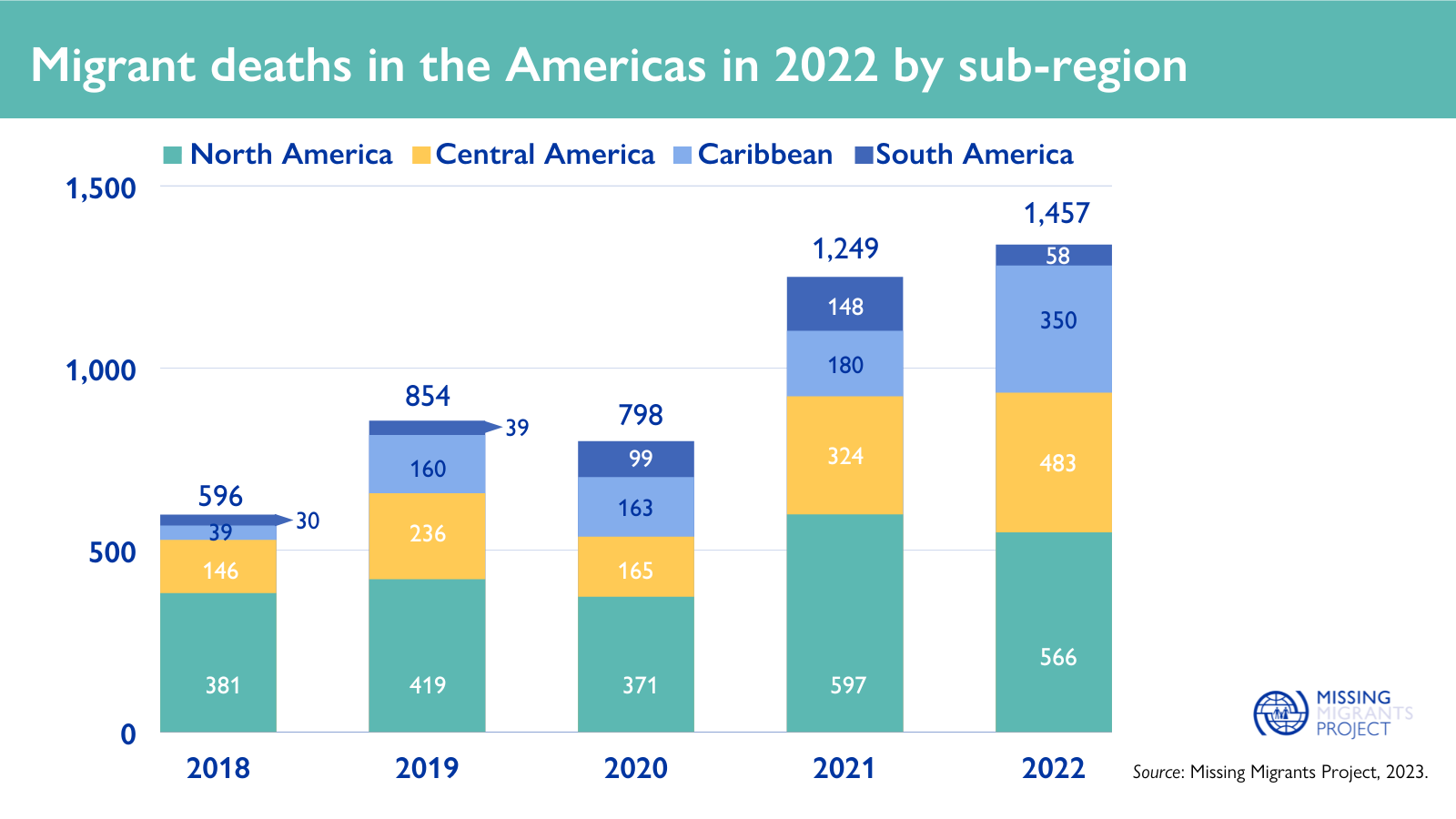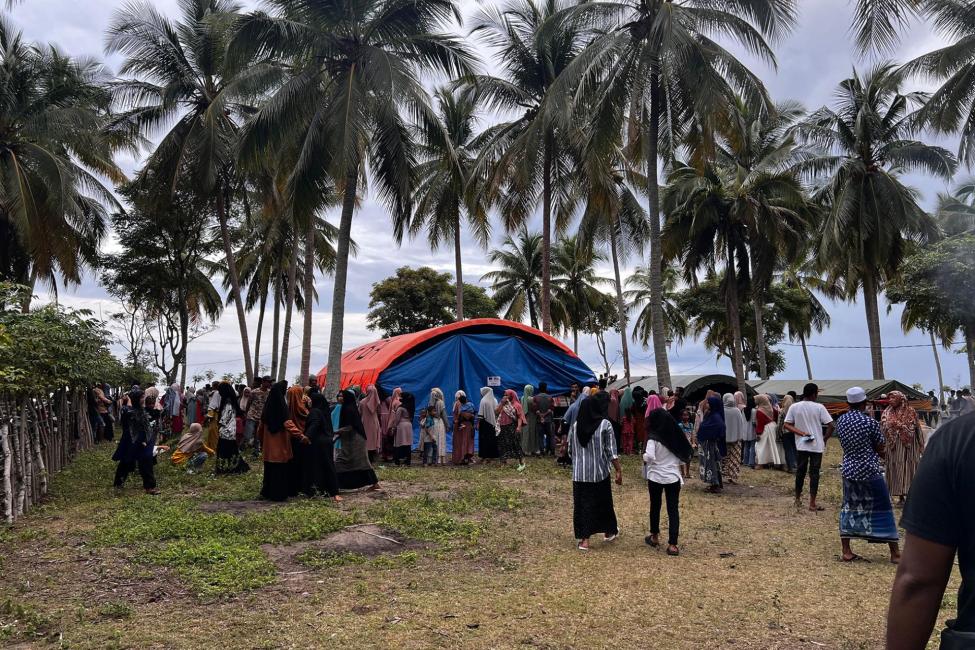-
Who we are
WHO WE AREThe International Organization for Migration (IOM) is part of the United Nations System as the leading inter-governmental organization promoting since 1951 humane and orderly migration for the benefit of all, with 175 member states and a presence in over 100 countries. IOM joined the United Nations system in September 2016.
About
About
IOM Global
IOM Global
-
Our Work
Our WorkAs the leading inter-governmental organization promoting humane and orderly migration, IOM plays a key role to support the achievement of the 2030 Agenda through different areas of intervention that connect both humanitarian assistance and sustainable development.
Cross-cutting (Global)
Cross-cutting (Global)
- Data and Resources
- Take Action
- 2030 Agenda
US-Mexico Border World’s Deadliest Migration Land Route
Geneva/Berlin/San José – The International Organization for Migration (IOM) documented 686 deaths and disappearances of migrants on the US-Mexico border in 2022, making it the deadliest land route for migrants worldwide on record.
The figure represents nearly half of the 1,457 migrant deaths and disappearances recorded throughout the Americas in 2022, the deadliest year on record since IOM’s Missing Migrants Project (MMP) began in 2014.
The data comes from IOM’s MMP annual overview, which underscores the growing death toll and increasing risks that migrants face throughout the region. These figures represent the lowest estimates available as many more deaths are likely to go unrecorded due to lack of data from official sources.
“These alarming figures are a stark reminder of the need for decisive action by States,” said Michele Klein Solomon, IOM Regional Director for Regional Director for Central and North America and the Caribbean. “Enhancing data collection is crucial. Ultimately, what is needed is for countries to act on the data to ensure safe, regular migration routes are accessible.”
Although the data shows that deaths and disappearances in the US-Mexico border decreased by 8 per cent from the previous year, the 2022 figure is likely higher than the available information suggests, due to missing official data, including information from Texas border county coroner's offices and the Mexican search and rescue agency.
Nearly half (307) of the deaths on the United States-Mexico border were linked to the hazardous crossing of the Sonoran and Chihuahuan Deserts, far more than other desert regions where irregular migration is prevalent. At least 212 people died in the Sahara Desert in 2022, but the remote nature of such areas means that data is likely incomplete.
One of the most concerning trends was the increase in deaths on migration routes in the Caribbean, with 350 documented in 2022 compared to 245 in 2021 and fewer than 170 recorded in all prior years. People from the Dominican Republic, Haiti, and Cuba accounted for the highest number of migrant deaths in the Caribbean.
The Darien Gap, an inhospitable jungle border crossing between Panama and Colombia, saw 141 documented migrant deaths in 2022. The remote and dangerous nature of this area and the presence of criminal gangs along the route means that this figure may not represent the actual number of lives lost.
Surveys of people who made the crossing conducted by IOM’s Displacement Tracking Matrix revealed that 1 in 25 respondents reported someone they were traveling with had gone missing. While these surveys were not representative, they are of grave concern considering that 250,000 people arrived in Panama via the Darien in 2022, and nearly 340,000 people have made the journey in 2023.
“The fact that we know so little about migrants who disappear in the Americas is a grim reality,” said Marcelo Pisani, IOM Regional Director for South America. “The impacts on the families left behind to search endlessly for a lost loved one are profound.”
These numbers reflect the fatal consequences of the lack of safe and regular mobility options. IOM works with governments and stakeholders in the Americas to develop regular, safe and dignified pathways for migrants. Addressing the root causes of irregular migration, enhancing humanitarian assistance, and providing better protection for vulnerable groups are essential steps in safeguarding the lives of migrants seeking a safer future.
The full report on 2022 migrant deaths in the Americas is available here.
Missing Migrants Project is a flagship initiative of the Global Migration Data Analysis Centre (GMDAC) within of the IOM’s Global Data Institute based in Berlin. The latest Missing Migrants Project data on the Americas can be found at https://missingmigrants.iom.int/region/americas
***
For more information please contact:
In Berlin:
Julia Black, Missing Migrants Project, jblack@iom.int
Jorge Galindo, jgalindo@iom.int
In Geneva:
Diego Pérez Damasco, +41 79 582 7235, diperez@iom.int
In San José:
Jorge Gallo, +506 7203 6536, jgallo@iom.int


